Some 80 years ago, when the transformation of rural China first unfolded, a woodcut artwork recorded this historic moment. Created by Gu Yuan in 1943 in Yan'an, the revolutionary base of the Communist Party of China, "Rent Reducing Rally" stands as a representative work of the "Yan'an Woodcuts School." In this piece, the artist broke new ground by blending European woodcut techniques with China's traditional woodblock prints, ushering in a new artistic style in the country's woodcuts and engravings.
10:53
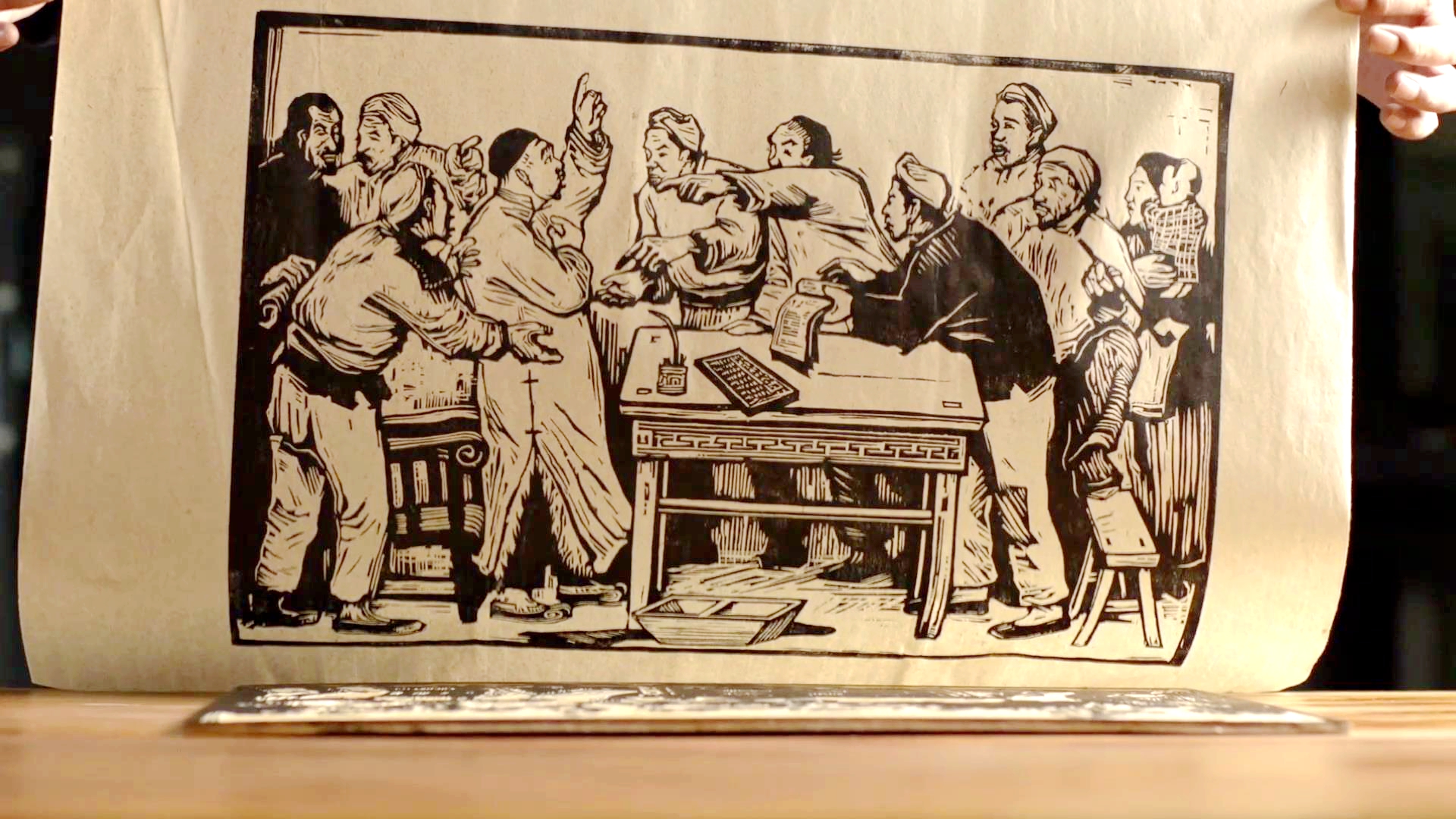
In the 1930s, Lu Xun, one of the greatest figures in 20th-century Chinese literature, introduced Western woodcuts to China, and an artistic movement soon emerged embracing the realism of this medium. Easy to read, understand and fabricate, woodcuts gained great popularity in Yan'an, and were widely deployed as an effective instrument to awaken and mobilize the masses. Hence the "Yan'an Woodcuts School" was born, the prolific and creative output of which has never been matched since.
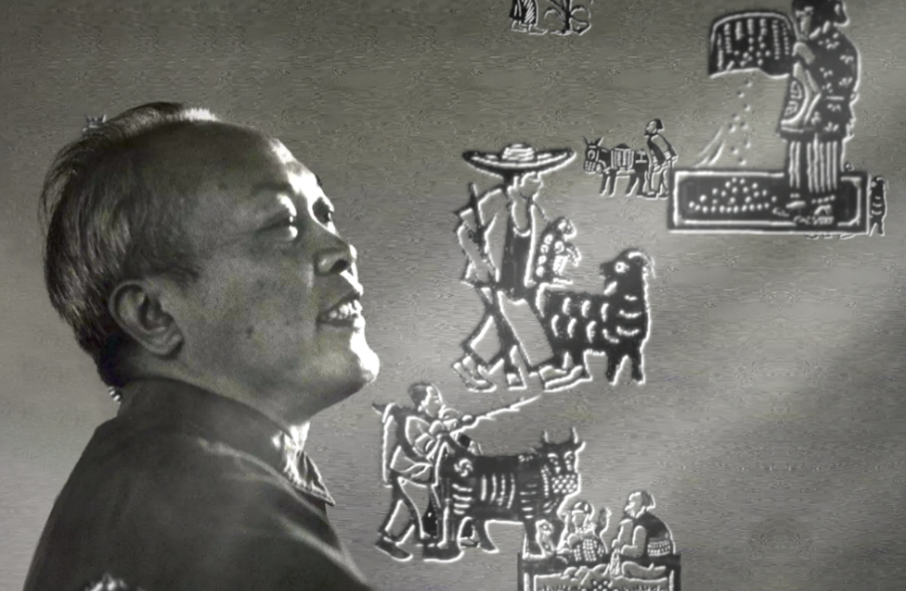
File photo of Gu Yuan. /CGTN
File photo of Gu Yuan. /CGTN
In 1938, Gu left his job as a rural teacher in south China's Guangdong and arrived in Yan'an in northwest China's Shaanxi. At the foot of the Baota Mountain, a large production campaign was underway to achieve economic self-sufficiency; soldiers and farmers joined forces in the fields to open up new farmlands and cultivate their crops. Inspired by this refreshing sense of freedom, Gu was deeply moved by the sight.
The next year, he began studying at the Lu Xun Academy of Arts, which gave the ambitious 20-year-old his first encounter with woodcuts. From then on, the young man chose to "speak" through his carving knife.
While pursuing his studies of the arts, Gu would often join local farmers and sketch scenes of their daily life. Through his keen observation of their expressions, postures and actions, he captured the essential features of China's rural life. During his stay in Nianzhuang Village, Gu frequently shared his latest works with villagers, and explained to them the meaning of his paintings. Local people liked to post his pictures on their walls, converting their homes into de facto galleries for Gu, like a kind of informal exhibition. While serving the farmers, Gu also learned from their comments and feedback.
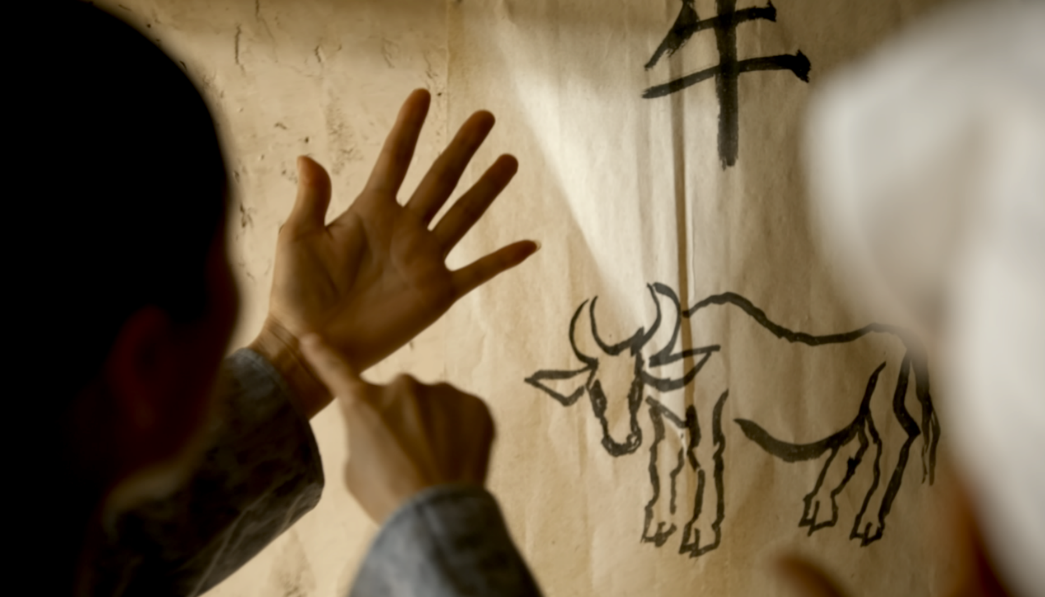
Gu Yuan helps farmers "read" his paintings. /CGTN
Gu Yuan helps farmers "read" his paintings. /CGTN
To start with, few of the farmers appreciated Gu's woodcuts. This is because there was a tendency at that time to imitate the European manners in terms of artistic expression, such as deploying the use of bold and sharp forms of contrast. In Yan'an, this approach was rejected by locals, as most people were unfamiliar with the expressionistic rendering of human features.
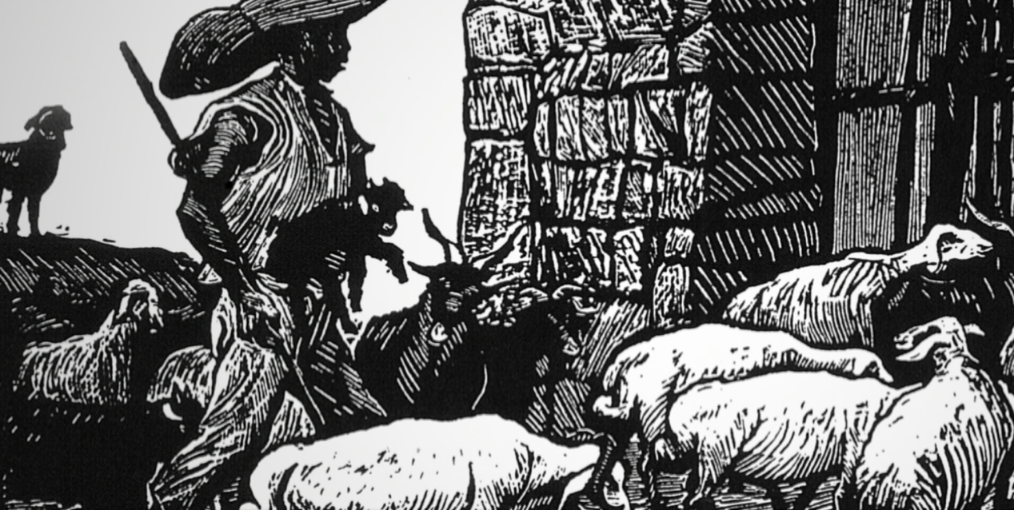
Details of "A Flock of Sheep" by Gu Yuan. /CGTN
Details of "A Flock of Sheep" by Gu Yuan. /CGTN
Therefore, Gu began to move in a new direction, drawing inspiration from rural life. Local papercuts and New Year pictures served as new sources to further shore up his artistic vocabulary. As the expressionistic black-and-white contrast gave way to traditional regular linearity, a new Oriental style of modern woodcuts asserted itself.

Details of "Marriage Registration" by Gu Yuan. /CGTN
Details of "Marriage Registration" by Gu Yuan. /CGTN
Regarding himself as a community member, Gu closely followed the daily newspapers to stay abreast of the latest rural developments. One day, a brief story caught his eyes: to construct a united front for the war effort and lessen farmers' burden, a land-rent-reduction campaign had been launched across the revolutionary base. At one of these rallies, Gu sensed an earth-shaking transformation that would make history. He was impressed by this empowering endeavor and decided to record the historic moment with his carving knife.
Pinching a strip of willow wood carbon, Gu blocked out the composition on a sheet of coarse paper. In his mind, he saw how the villagers would react if a rent-reducing rally were to be held there. He saw how the landlord would appeal to the heavens and how the courageous villagers would put their feet down and claim their rightful share.
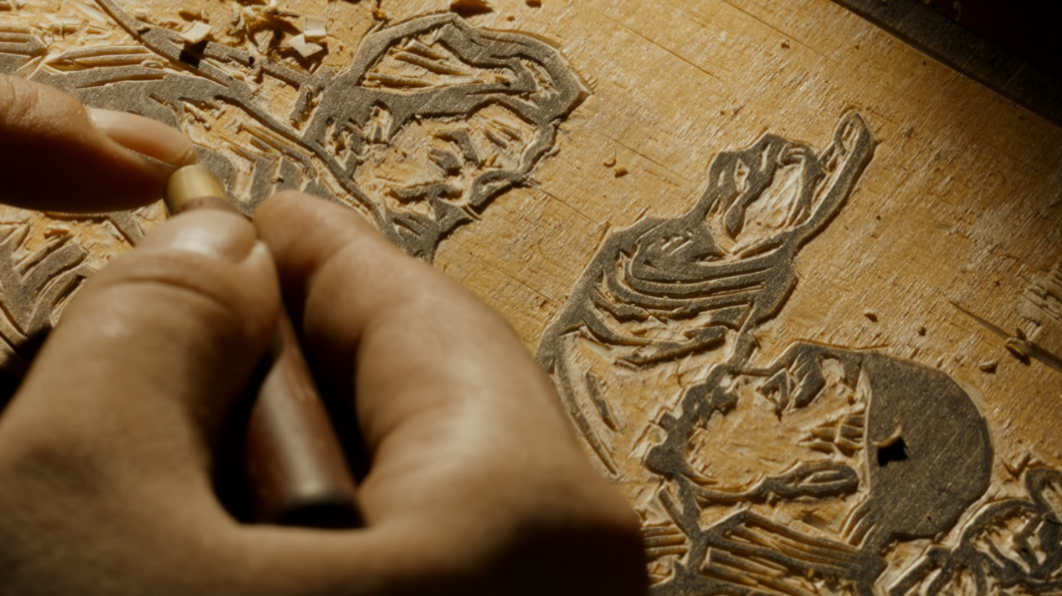
The artist adds touches to "Rent Reducing Rally." /CGTN
The artist adds touches to "Rent Reducing Rally." /CGTN
Gu chose a rounded blade for this image. On a piece of pear wood board measuring 20 centimeters by 13.5cm, he had to be as precise as a surgeon in arranging the 11 figures. The lines were all clean and elegant, following the style of traditional woodblock prints. Meanwhile, the density and strength of the cuts echoed the unfolding changes of the times.
The paper lifted from the carved surface presented an image of a new epoch. The figures in the picture may have no names, but they are all based on real people. The feeling of the times is indelibly imprinted in these carved lines.
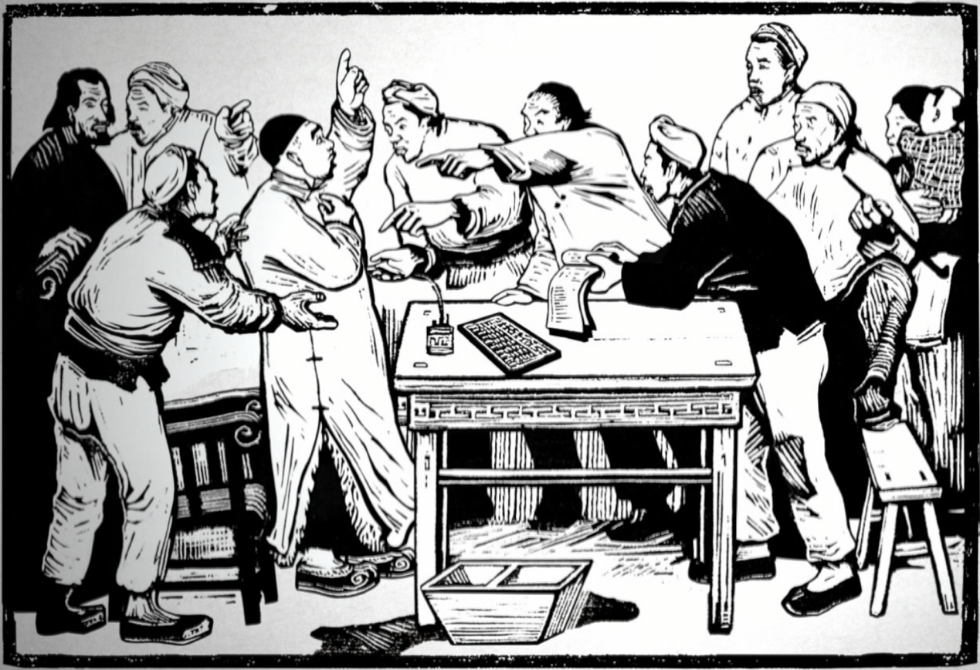
"Rent Reducing Rally" by Gu Yuan. /CGTN
"Rent Reducing Rally" by Gu Yuan. /CGTN
Great art is a mirror of its times, and a great artist will always try to capture the spirit of the times. Scores of decades ago, Gu, who once described his artistic goal as being "to record and represent the beauty of contemporary experience for future generations," felt the strength of the people and recorded the immense transformation of rural China. Nowadays, those rallies to reduce rent have been replaced by rural vitalization. But this artistic embodiment of rural China serves as an enduring monument marking the origin of all those changes that were about to sweep the nation.